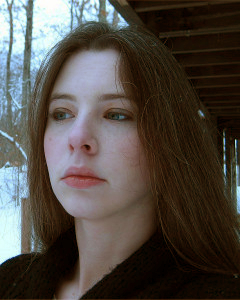
Jessica Linker Department of History University of Connecticut 2013-2014 Research Fellow
My dissertation examines women’s relationship to scientific practice in America between 1720 and 1860. Through documenting a broad range of women’s scientific activities, I believe I can better evaluate how gender shaped the creation of scientific knowledge, institutions, and practice. Additionally, in the course of this project I have located a significant number of women practitioners who have disappeared from the historical record. In determining the social and cultural forces that retroactively obscured women’s work in this time period, I suggest that the current gender gap in the sciences is the product of more recent historical circumstances.
I used my PACHS fellowship to expand research for two chapters of my project: one on curricula in female academies, and another on women’s botanical manuscripts. I split my time between American Philosophical Society and The Library Company of Philadelphia, whose respective staffs offered kind and thoughtful assistance while I was in residence. I am, of course, also immensely grateful to PACHS for generously funding my time in Philadelphia. My chapter on curricula in female academies occupied the majority of my time. This chapter teases out how an academy’s locale, religious affiliation, conception of gender roles, faculty, resources, and assigned texts shaped how young women would learn and practice science. To determine the range and most popular assigned texts, I mined female academy catalogs and brochures at Library Company. I followed up by reading through various editions of some the more commonly assigned titles there and at American Philosophical Society. Some texts varied significantly from edition to edition, depicting women practitioners of science and the boundaries of their knowledge in radically different ways. Young female pupils in natural history courses reading the Boston 1793 edition of Sarah Trimmer’s An Easy Introduction to the Knowledge of Nature would have encountered a scientifically-literate mother, unapologetic for her extensive knowledge of volcanoes and planets, but those reading later editions found a mother only capable of discussing the simplest concepts, who frequently deferred to a school teacher or tutor who knew better. American reprints of British editions often tweaked gender roles to reflect what the editors believed to be national differences, and the 1857 Sunday School Union version of Trimmer surely reflected its religious sponsors. Different texts bearing the same titles could either reify or undermine a school’s agenda, and one should not assume that the curricula of institutions seemingly using the same books had any pedagogical resemblance. Text selection was one of many ways academies created competing models for teaching young women science.
The other chapter I focused on discusses the various iterations of women’s herbaria and related botanical manuscripts. Aware that leaves would stain paper, women frequently transformed old and unloved manuscripts and books into makeshift cases for their botanical collections. We often find women’s specimens in unrelated material ranging from newspapers to old business ledgers. One of the David Hall ledgers at American Philosophical Society contains the beginnings of a herbarium by one of his female descendants. I spent much of my time there following up on that item, which I had found on a previous visit. Also, and to my great delight, American Philosophical Society had recently acquired Jane Colden’s copy of The Anatomy of Vegetables Begun by Nehemiah Grew. Colden probably consulted this book to create her famous botanical manuscript, Flora of New York. This particular item provided me with more insight into Colden’s choice of botanical terminology and descriptions.
PACHS very kindly accommodated my busy schedule by allowing me to arrive early to research, but this unfortunately meant that I missed the opportunity to interact with the most of the other PACHS fellows. Despite this, PACHS arranged a wonderful lunch and discussion, I was invited to participate in working groups via Skype, and I was put in touch with other fellows sharing my interests who were slated to arrive later in the year.